World Employment and Social Outlook: Trends 2024 Report (The Hindu)
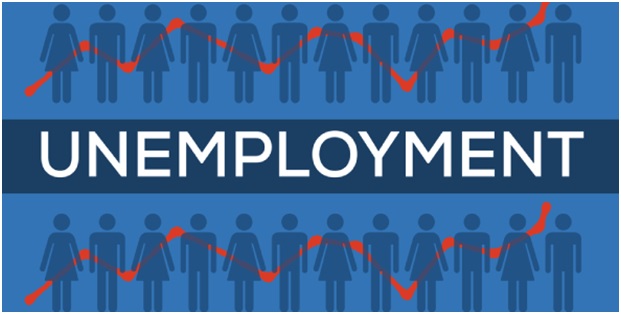
- 11 Jan 2024
Why is it in the News?
The global unemployment rate is set to increase in 2024 while growing social inequalities remain a concern, according to the International Labour Organisation’s (ILO) World Employment and Social Outlook: Trends 2024 report released in Vienna recently.
Key Findings:
- Employment Trends: Joblessness and the jobs gap have both decreased below pre-pandemic levels, but global unemployment is expected to rise in 2024.
- The macroeconomic environment witnessed a significant deterioration in 2023.
- Global Economic Challenges: Ongoing geopolitical tensions and persistent inflation led to frequent and aggressive actions by central banks.
- Monetary authorities in both advanced and emerging economies implemented the fastest interest rate increases since the 1980s, with widespread global repercussions.
- Economic Slowdown in Key Economies: China, Türkiye, and Brazil experienced notable slowdowns, adversely affecting global industrial activity, investment, and trade.
- Despite the economic slowdown, global growth in 2023 surpassed expectations, and labour markets displayed unexpected resilience.
- Unemployment Dynamics: The global unemployment rate in 2023 improved modestly to 5.1% compared to 2022.
- Labour market participation rates largely recovered from pandemic lows, but concerns arise about structural imbalances persisting.
- Wage Trends: Real wages declined in most G20 countries as increases failed to keep pace with inflation.
- Workers living in extreme poverty (earning less than US$2.15 per day per person in PPP terms) increased by about one million globally in 2023.
- Positive real wage growth was observed in China, the Russian Federation, Mexico, India, and Türkiye.
Recommendations As per the Report:
- Inclusive Labor Policies: Policymakers in rapidly ageing countries should focus on supporting the participation of groups with weak labour market attachment, including youth, women, and older workers.
- Investment and Skills Strategies: Investment and skills policies should aim to enhance productivity, and potential growth, and promote a more productive utilization of technological progress.
- Sectoral Improvements: Motivating workers who leave due to low pay and challenging working conditions can be achieved by improving conditions in sectors and occupations with these challenges.
- International Workforce Matching: Facilitating the matching of internationally mobile workers to suitable jobs could alleviate some of the shortages in the labour market.
- Long-Term Engagement: Recognizing that structural challenges in labour market adjustment are unlikely to vanish in the short term, it is crucial for governments and social partners to engage in ongoing efforts to address these challenges.
International Labour Organization (ILO)
- The International Labour Organization (ILO) stands as the United Nations agency dedicated to the world of work.
- Mission: The core mission of the ILO is to promote social and economic justice by establishing and advancing international labour standards.
- Motto: At the heart of the ILO's mission is the pursuit of Decent Work for all, encapsulating the commitment to fostering conditions that are fair and dignified.
- Headquarters: Situated in Geneva, Switzerland, the ILO operates from its global headquarters.
- Parent Organization: Functioning under the Economic and Social Council of the United Nations, the ILO is a vital component of the UN system.
- Additionally, it is a member of the United Nations Development Group (UNDP), collaborating with other UN organizations to achieve Sustainable Development Goals.
- Historical Background: Established in 1919 under the Treaty of Versailles, following the conclusion of World War I, the ILO was conceived with the conviction that enduring and universal peace could only be realized through a foundation of social justice.
- In 1946, it transitioned into a specialized agency within the newly formed United Nations.
- Membership: The ILO boasts a diverse membership, with 187 member states, encompassing 186 out of the 193 UN member states along with the Cook Islands.
- Organizational Structure: Distinguishing itself as the only tripartite U.N. agency, the ILO brings together representatives from governments, employers, and workers of its 187-member states, fostering collaborative efforts in shaping global labour standards and policies.
The Process of Selecting Tableaux for the Republic Day Parade (Indian Express)
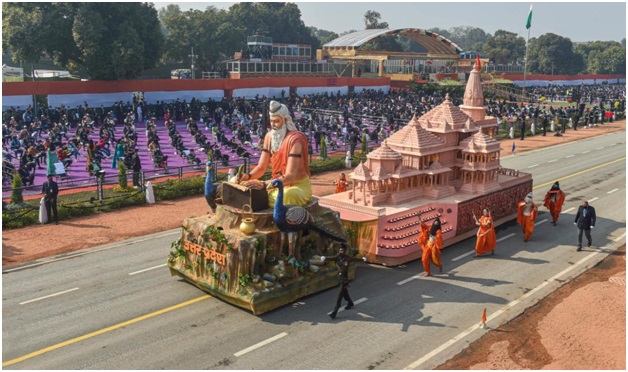
- 11 Jan 2024
Why is it in the News?
India’s Republic Day celebrations are incomplete without colourful tableaux cantering down the Kartavya Path (formally Rajpath). Showcasing India’s rich and diverse cultural heritage, they add colour to the grand event on January 26.
Who can send tableaux to the Republic Day parade?
- According to the Ministry of Defence (MoD), each year, a select number of “State Governments/UT Administrations/Central/Ministries/Departments” send their tableaux to the Republic Day parade.
- There is a rigorous application process which begins with interested parties submitting a concept note, along with design blueprints to the MoD.
How does the selection process work?
- The tableaux proposals received are evaluated by a committee of experts appointed by the MoD, comprising prominent persons in the fields of art, culture, painting, sculpture, music, architecture, choreography, etc. The selection process happens in a phased manner.
- STAGE 1 involves the assessment of the initial proposals and the design sketch/blueprint.
- The Committee sits alongside official representatives of the participants and suggests modifications, if necessary.
- A number of proposals may be rejected in this stage itself.
- STAGE 2 involves the assessment of three-dimensional models of the proposals.
- If the Committee is satisfied with the model, then the tableau is selected and further sent for fabrication.
- The Committee can also suggest changes to models before selection.
- Crucially, while the process is envisioned to be collaborative, the Committee has the final say on which tableaux are chosen, and can order any modifications they feel are required.
What is the basis of selection?
- Selection depends upon a combination of factors including but not limited to visual appeal, impact on the masses, idea/theme of the tableaux, degree of detailing involved in the tableaux, music accompanying the tableaux, local artists used etc.
- Each year, the MoD comes up with an overarching theme, under which, participants can showcase elements relevant to their respective state/UT/department in their tableaux.
- This year’s theme is “Viksit Bharat” (Developed India) and “Bharat: Loktantra ki Matrika” (India: the Mother of Democracy).
- The Defence Ministry also shares the basic guidelines about what all the tableaux can or should include.
- The participating entities must engage “young qualified designers from renowned institutions”, electronic display walls for a bright display of images or content, moving elements using robotics or mechatronics, 3D printing could be used for certain elements, use of augmented or virtual reality, and special effects to improve the optics and visual effects of the tableau.
- Extra weightage is given to tableaux which conform to these guidelines.
- Importantly, the tableaux of two different states/ UTs must not be too similar, and eco-friendly materials must be used for their construction.
'Report Fish Disease' to Monitor Fish Diseases (TOI)
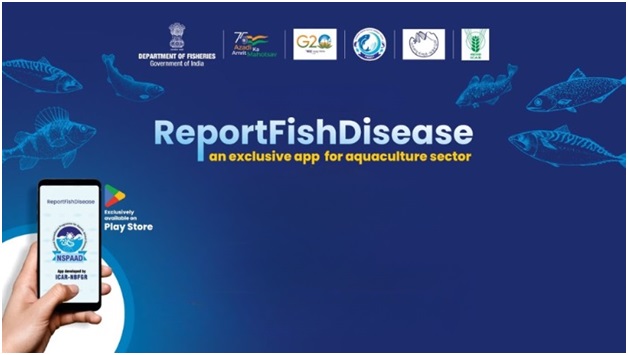
- 11 Jan 2024
Why is it in the News?
A mobile app titled ‘Report Fish Disease’ has been introduced to help aquaculture farmers to report diseases on their farms.
What is the 'Report Fish Disease' App?
- The mobile application is designed to empower fish farmers by offering a convenient and effective platform for reporting diseases on their farms.
- Developed as part of the NSPAAD project, with the lead institute being ICAR-NBFGR and a collaborative partnership with the Central Institute of Fisheries Technology (CIFT), this app brings a host of features and benefits.
Key Features:
- User-Friendly Interface: The app provides fish farmers with an intuitive and user-friendly interface, ensuring easy accessibility.
- Efficient Disease Reporting: A simplified reporting format allows farmers to easily report disease outbreaks by providing essential information such as location, affected species, observed symptoms, and images.
Significance:
- Swift Response through Geo-tagging: Utilizing geo-tagging technology, the app facilitates a rapid response from authorities.
- Farmers receive real-time updates on the status of their reported cases, ensuring transparency and accountability in disease management.
- Information Hub: Beyond reporting, the app serves as an information hub, offering farmers valuable resources on disease prevention, treatment, and best aquaculture practices.
- Comprehensive Disease Management: The app is a comprehensive package aimed at diagnosing, preventing, controlling, and treating aquatic animal diseases.
- It provides solutions to encourage aquaculture farmers to maintain the health of their stocks.
Anticipated Impact:
- By transforming disease management in aquaculture, the app aims to enhance the sustainability and productivity of this critical sector.
- It achieves this through early disease detection, data-driven decision-making, capacity building, and efficient resource allocation.
The ultimate goals of the app include:
- Improved Livelihood: Enhancing the livelihood of fish farmers through proactive disease management.
- Food Security: Safeguarding the nation’s food security by ensuring the health and well-being of aquatic animal stocks.
- Industry Growth: Contributing to the sustainable growth of the aquaculture industry by fostering a proactive approach to disease prevention and management.
Henley Passport Index 2024 (Indian Express)
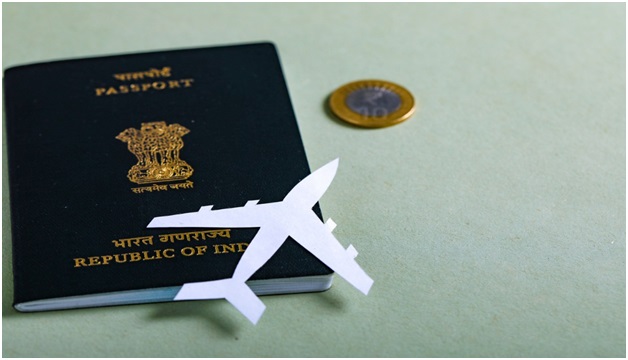
- 11 Jan 2024
Why is it in the News?
The Henley Passport Index, which ranks the world’s most travel-friendly passports, has released its list for 2024, with European nations of France, Germany, Italy and Spain, and Asia’s Japan and Singapore sharing the number one spot.
Highlights of Henley Passport Index 2024:
- The Henley Passport Index for 2024 ranks different passports according to the number of destinations their holders can visit without a prior visa or can avail of a visa on arrival, a visitor’s permit, or an electronic travel authority (ETA) on entering the destination.
- The rankings are based on the analysis of data provided by the International Air Transport Association (IATA).
- It then provides a ‘Visa-free score’ which, essentially, is the number of destinations that the holders of that particular passport can travel to without a prior visa or can avail of a visa on arrival or other similar permits.
- For instance, those holding the passports of the countries in the #1 spot had access to 194 visa-free destinations while those holding the Afghanistan passport ranked last at #104, had visa-free access to only 28 of them.
- As per the latest rankings, France, Germany, Italy, Japan, Singapore, and Spain hold the top spot as the world's most powerful passports, allowing visa-free entry to 194 global destinations.
- Finland, Sweden and South Korea shared the second rank, while Austria, Denmark, Ireland and Netherlands occupied the third spot.
- India, meanwhile, has improved its ranking and moved up to the 80th position from the previous year’s ranking of 84.
- Those holding an Indian passport have visa-free access to 62 destinations.
- World’s least powerful passports:
- Afghanistan (Score: 28) - visa-free access to only 28 destinations
- Syria (Score: 29) - visa-free access to only 29 destinations
- Iraq (Score: 31) - visa-free access to only 31 destinations
- Pakistan ( (Score: 34) - visa-free access to only 34 destinations
About Henley Passport Index:
- The Henley Passport Index is the original, authoritative ranking of all the world’s passports according to the number of destinations their holders can access without a prior visa.
- The index is based on exclusive data from the International Air Transport Association (IATA) – the largest, most accurate travel information database – and enhanced by Henley & Partners’ research team.
- It started in 2006 as the Henley & Partners Visa Restrictions Index (HVRI).
- The Henley Passport Index compares the visa-free access of 199 different passports to 227 travel destinations.
Carbon Border Adjustment Mechanism (CBAM) (Indian Express)
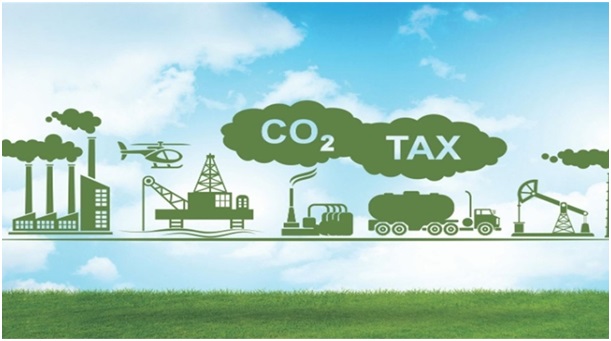
- 11 Jan 2024
Why is it in the News?
Recently India has flagged concerns relating to sensitive and confidential trade data of its exporters getting compromised while complying with the European Union’s Carbon Border Adjustment Mechanism (CBAM).
What Is Carbon Border Adjustment Mechanism (CBAM)?
- CBAM is a policy tool introduced by the European Union (EU) to reduce carbon emissions by imposing a carbon tax on imported products, ensuring that they are subject to the same carbon costs as products produced within the EU.
- It is part of the EU's "Fit for 55 in 2030 package" to reduce greenhouse gas emissions by at least 55% by 2030 compared to 1990 levels.
- The aim of CBAM is to prevent carbon-intensive imports from undermining the EU's climate objectives and to encourage the adoption of cleaner production practices around the world.
- To implement CBAM, importers will need to declare the quantity of goods imported and their greenhouse gas emissions on an annual basis.
- They will need to surrender a corresponding number of CBAM certificates to offset these emissions, and the price of these certificates will be based on the weekly average auction price of EU Emission Trading System (ETS) allowances in Euro/tonne of CO2 emitted.
- It encourages non-EU countries to adopt stricter environmental regulations, reduce global carbon emissions, and prevent carbon leakage by discouraging companies from moving to countries with weaker environmental regulations.
- Additionally, the revenue generated from CBAM will be used to support EU climate policies, which can serve as an example for other countries to promote green energy.
Impact of CBAM on India:
- The EU's carbon border adjustment mechanism will have a negative impact on India's exports of metals such as iron, steel, and aluminium products.
- The mechanism will subject these exports to extra scrutiny and impose carbon levies ranging from 19.8% to 52.7%, which could threaten India's major exports to the EU.
- From 1st January 2026, the EU will start collecting the carbon tax on each consignment of steel, aluminium, cement, fertilizer, hydrogen and electricity, which could further harm India's exports to the EU.
- The high carbon intensity of Indian products, due to coal being the dominant energy source, is a concern for the country as it may result in higher carbon tariffs from the EU.
- India's use of coal is much higher than the EU and the global average, with coal-fired power accounting for almost 75% of India's energy consumption.
- This makes direct and indirect emissions from industries like iron, steel and aluminium a significant worry for India.
- The lack of a domestic carbon pricing scheme in India poses a risk to its export competitiveness, particularly for sectors such as refined petroleum products, organic chemicals, pharma medicaments, and textiles, which are among the top 20 goods imported by the EU from India.
- Countries with a carbon pricing system may have a competitive advantage as they may pay less carbon tax or receive exemptions.
- This risk could expand to other sectors in the future.
What can be done?
- India can take a multi-pronged approach to mitigate the impact of the EU's Carbon Border Adjustment Mechanism (CBAM) on its exports.
- One of the ways is to implement a Decarbonization Principle, which refers to reducing or eliminating greenhouse gas emissions from human activities such as transportation, power generation, manufacturing, and agriculture.
- The government could complement its existing schemes such as the National Steel Policy and the Production Linked Incentive (PLI) scheme with a Decarbonization Principle.
- This would encourage industries to focus on carbon efficiency, making their products more competitive in a carbon-conscious world.
- Another way is to negotiate with the EU to recognize its energy taxes as equivalent to a carbon price.
- India could also negotiate with the EU to transfer clean technologies and financing mechanisms to aid in making India's production sector more carbon efficient.
- One way to finance this is to propose that a portion of the EU's CBAM revenue could be set aside to support India's climate commitments.
- Additionally, India could begin preparing for the new system by establishing a Carbon Trading System, as China and Russia do.
- India can encourage sustainable and eco-friendly production by providing incentives, which will enable the country to stay competitive in a more carbon-conscious future while achieving its 2070 Net Zero Targets. This will help India pursue its developmental goals and economic aspirations without any compromise.
